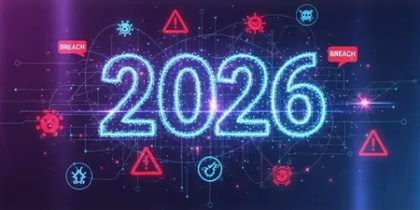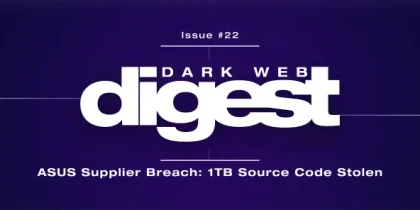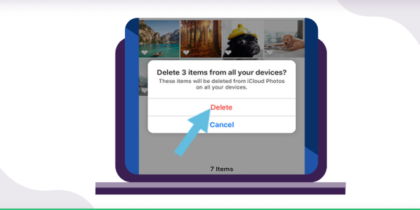Your email could be compromised.
Scan it on the dark web for free – no signup required.
Imagine this: you open Gmail, check your inbox, send a message — no red flags. But behind the scenes, malware on your device quietly copied your email address and password, bundled it with thousands of others, and shipped it off to the dark web’s bargain table.
That’s not sci-fi—it’s the reality of a leak affecting ~183 million credentials, including millions of Gmail accounts.
This isn’t a platform hack of Google’s servers — it was a breach of countless personal computers. If you reused that Gmail password somewhere else, the fallout could be far wider than your inbox.
Whether you’re a busy email user, a professional with sensitive access, or a business admin, this breach matters. Because once passwords are exposed, the dark web doesn’t sleep.
This edition takes you through how it happened, what’s exposed, why the dark web loves this data, and how you can act fast.
What’s the News (In Short)
- A dataset named “Synthient Stealer Log Threat Data”, containing approximately 183 million unique email + password pairs, was added to Have I Been Pwned (HIBP) on 21 October 2025.
- Many of the credentials are linked to Gmail accounts and include plaintext passwords plus domain information (i.e., the website or service they were used on).
- The leak did not arise from Google’s infrastructure being hacked; rather, from infostealer malware capturing credentials from infected personal devices. It came from compromised personal devices infected by infostealer malware.
- Many of the leaked credentials were previously unseen — HIBP (Have I Been Pwned) reports that roughly 16 million email addresses in this dataset had never appeared in any public breach before.
- This isn’t a single-company breach—it’s a multi-source credential dump combining logs from many victims via underground malware campaigns.
- Dark Web Tip:👉 Run a free Dark Web Exposure Scan to see if your data is at risk.
What Happened — The Mechanics of the Breach
- Infostealer malware infection: Attackers deploy malware on devices (via phishing emails, malicious sites, pirated software) that quietly harvests credentials, cookies, session tokens, autofill data, and sometimes even browser-saved financial/crypto data.
- Data aggregation & logging: The stolen credentials are sent to attacker-controlled servers. The Synthient team observed peaks of 600 million stolen credentials in a day, and indexed 30 billion Telegram messages leaking data.
- Marketplace listing & resale: The data was added to HIBP and likely exists in dark web forums, available for credential-stuffing, identity theft, resale bundles, and targeted campaigns.
- Credential reuse & escalation: Because many users reuse passwords across multiple accounts, one stolen Gmail password can unlock email, bank, work systems, crypto, and more.
- Bypassing 2FA/session hijack: Some infostealer logs include session cookies or tokens, enabling attackers to bypass SMS-based 2FA or login flows—making the credential exposure even more dangerous.
What Was Leaked (or at Risk)?
Here’s what the news is confirming (and what is suspected):
- Email addresses for a large number of Gmail users.
- Passwords in plaintext for those accounts and other services (since many users reuse credentials).
- Domain and website associations (the “where you used this login”) are included in the logs, which expands the attack surface.
- Potentially active session cookies, browser autofill information, crypto wallet keys, and other device-harvested credentials harvested by infostealer malware (in some cases) — which could bypass 2FA in weak setups.
Risk massively increases when users reuse credentials across multiple services (email + banking + work systems) or fail to enable robust authentication.
Who’s Behind It
There’s no confirmed threat actor in this case — this appears to stem from internal misconfigurations and overexposed API endpoints rather than a targeted hack.
However, researchers suggest that data brokers and dark web actors are already indexing this information for resale and AI model training. In short, while no single hacker group is claiming credit, the real exploitation is happening downstream — as exposed metadata fuels phishing kits, behavioral analytics, and identity-matching tools across the web.
What Google Said
Following the discovery of the massive credential leak, Google confirmed that the exposed data wasn’t the result of a direct breach of its systems, but rather part of a wider infostealer malware campaign targeting individuals’ devices and browsers.
A Google spokesperson told:
“This report covers broad infostealer activity that targets many types of web activities. When it comes to email, users can help protect themselves by turning on 2-step verification and adopting passkeys as a simpler and stronger alternative to passwords.”
Google also advised Gmail users to immediately review their account activity if they suspect compromise.
If users are unable to sign in, Google recommends visiting the account recovery page and following the guided steps to restore access.
“Additionally, to help users, we have a process for resetting passwords when we come across large credential dumps such as this,” the spokesperson added.
To further protect themselves, Gmail users can also leverage Google Password Manager’s Checkup feature to see if any stored passwords are exposed, reused, or weak.
This tool can be accessed in Chrome by going to:
Settings → Passwords and Autofill → Google Password Manager → Checkup.
Why This Breach Hits Hard
Most breaches start with a single company’s database being exposed. This one didn’t.
It hijacked people’s devices directly, stealing credentials at the source — before encryption, before any firewall could intervene. That makes it harder to detect, harder to trace, and nearly impossible to contain.
Here’s why this one hits different:
- Credentials are currency: 183 million email/password pairs are a jackpot for cybercriminals on dark web markets.
- No single point of failure: Since the data was siphoned from thousands of infected devices, there’s no central system for authorities to shut down or patch.
- Credential stuffing escalation: Reused passwords are like skeleton keys. Once one account is in, attackers try dozens more. Attackers can test these credentials across banks, streaming services, crypto wallets, and corporate accounts instantly.
- Proof-of-access currency: Leaked credentials act as proof to buyers and criminals, validating toolkits and automation bots.
- Metadata matters: Having the domain, the username, the password, and service context all in one dump is rich for targeted attacks. Leaked websites and domains show exactly where each password was used — giving hackers a roadmap to exploit.
- Dark web resale market: Data like this is traded, bundled, and repackaged — what looks “old” often isn’t used until real-world scams trigger it.
- Multi-service cascade risk: When email credentials are compromised, they open doors to social accounts, financial services, and enterprise logins. The breach becomes a supply chain of access.
- Infostealer shift: This isn’t “someone hacked Google” — it’s malware that hits you personally. Your device becomes the attack vector. Once the credential is exfiltrated, it travels far. The malware logs are traded daily across Telegram channels and dark web forums — making your credentials a repeat commodity.
- Long-tail risk: Even old data remains weaponizable; credentials harvested months ago still feed new phishing, scam, and credential-stuffing campaigns.
What’s Happening on the Dark Web
Dark web marketplaces and Telegram channels are already buzzing with activity around the Synthient Stealer dataset. Cybercriminals are sharing, trading, and even selling searchable logs that include Gmail accounts, plaintext passwords, and session cookies.
What’s most alarming?
Many of these credentials are being bundled with metadata — like the websites where the passwords were used and the timestamps of logins. This gives threat actors a treasure map for credential-stuffing attacks and impersonation campaigns.
Reports also suggest that some logs contain authentication tokens and browser session cookies, which can let attackers bypass 2FA altogether. Once resold or repackaged, these assets fuel everything from phishing-as-a-service kits to identity theft rings.So even if the passwords themselves are changed, the dark web economy of stolen identity data ensures this leak continues to evolve — quietly and profitably.
What You Should Do Right Now
- Run the free scan: — Protect exposed identifiers today. PureVPN offers a free Dark Web Exposure Scan (also linked above) that allows users to check if their credentials appear on the dark web marketplaces and known leaks. In ~30 seconds, you’ll learn:
- Are you exposed?
- How severe is the compromise?
- How recent was the leak?
- How many breaches include your account?
After all, early detection = early action.
- Change your passwords everywhere: Especially for your primary Gmail account and any service where you reused that password.
- Enable strong multi-factor authentication (MFA): Prefer hardware keys or authenticator apps over SMS codes.
- Use unique passwords: One-password-to-rule-them-all = one breach to rule them all. A password manager helps.
- Audit connected devices & apps: Check for unfamiliar logins or connected devices in your Gmail/Google account.
- Scan your machine for malware: Since this leak comes from infostealer malware, ensure your device isn’t compromised by running reputable anti-malware scans and keeping software updated.
- Be alert for phishing: With leaked credentials, attackers craft personalized scams. Always verify any email/txt/call asking for credentials or device access.
- Monitor your accounts: For any unusual activity (new sign-in alerts, password reset attempts, unexpected account changes).
What’s Next — Final Thoughts
This incident serves as a spotted red flag flying across the sky: even the strongest platforms aren’t safe if your device falls. The 183 million credentials leaked isn’t just a number — it’s hundreds of millions of potential “first dominoes” in identity theft, account take-overs, and dark web exploitation.
If you thought a single password leak wouldn’t matter — think again. This isn’t about one website being hacked; it’s about your digital identity being harvested and sold.
The best time to act was yesterday. The next best time is now. Run your scan, change your passwords, and treat your email account like the vault it should be. Because once a password flies off into the dark web, the return journey is rare.
Why Subscribe?
Every week, Dark Web Digest cut through the noise and bring you the breaches that matter, the tactics behind them, and the steps you need to protect yourself — all in a conversational, no-fluff format.
If you don’t want to be the last to know when your personal data hits the dark web, subscribing is your safety net.
👉 Stay ahead, stay secure, stay subscribed.
Note: This edition of Dark Web Digest is based on publicly available information as of Oct 27th, 2025.








